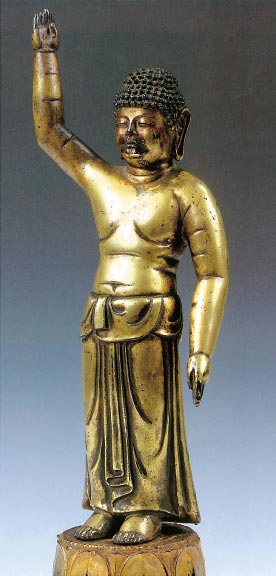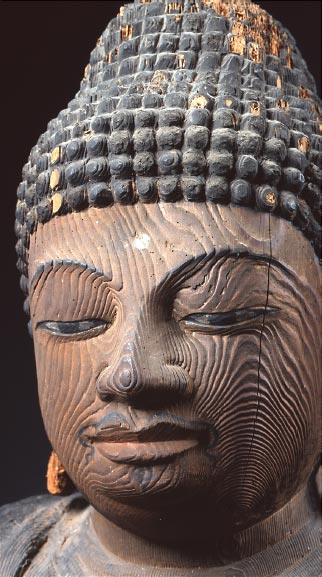The founder of Buddhism, Śākyamuni (also known as Gautama), was born around 463 B.C. as the prince of the Śākya clan. At 29, he left his home to become an ascetic. After years of training, he achieved enlightenment under the Bodhi tree and became the Buddha (the “Awakened One”) at 35. Thereafter, he delivered his first sermon at Deer Park and traveled around Central India to spread his teachings to people until his death at age 80. With his death, Śākyamuni entered his final nirvana or ultimate peace—an auspicious event in which he was liberated from the cycle of transmigration. Understanding this, his disciples endeavored in their training and practice based on his teachings and precepts according to the path he founded.
However, in time, many Buddhists, primarily lay followers, felt the loss of the Buddha in life. Through their devotion, the Buddha’s remains came to be divided and enshrined in stupas, which were adorned with decorative pillars depicting the life of Śākyamuni and the virtuous deeds in his past lives in relief. In time, Mahāyāna Buddhism, which is thought to have emerged from these followers, was introduced to Japan.
However, in time, many Buddhists, primarily lay followers, felt the loss of the Buddha in life. Through their devotion, the Buddha’s remains came to be divided and enshrined in stupas, which were adorned with decorative pillars depicting the life of Śākyamuni and the virtuous deeds in his past lives in relief. In time, Mahāyāna Buddhism, which is thought to have emerged from these followers, was introduced to Japan.


3 Standing Buddha at Birth
Nara period, 8th century
Zensui-ji Temple, Konan City
Important Cultural Property
Nara period, 8th century
Zensui-ji Temple, Konan City
Important Cultural Property
Seeking the causes and conditions in which Śākyamuni appeared, the followers, who were left in the world without the Buddha, arrived upon the idea of past Buddhas and anxiously awaited for the future Buddha Miroku (Skt., Maitreya), who is believed to appear 5.67 billion years from now. As if not being able to wait for his appearance, the Mahāyāna tradition created otherworldly Buddhas, such as Amida (Amitābha) of the Western Paradise, and Yakushi (Bhaiśajyaguru) and bodhisattvas who are believed to stay on in this world to save people from suffering in this world such as Kannon (Avalokiteśvara), Fugen (Samantabhadra), and Monju (Ma˝juŚrī). In time, a vast cosmic vision of Buddhas, such as those taught in the
Flower Garland Sutra (J., Kegonkyō) and Brahma’s Net Sutra (J.,
Bonmōkyō), came into being.
4 Seated Medicine Buddha Yakushi
(Skt., Bhaiśajyaguru)
Heian period, 10th century
Dainichi-ji Temple, Kōka City
Prefectural Cultural Property
(Skt., Bhaiśajyaguru)
Heian period, 10th century
Dainichi-ji Temple, Kōka City
Prefectural Cultural Property